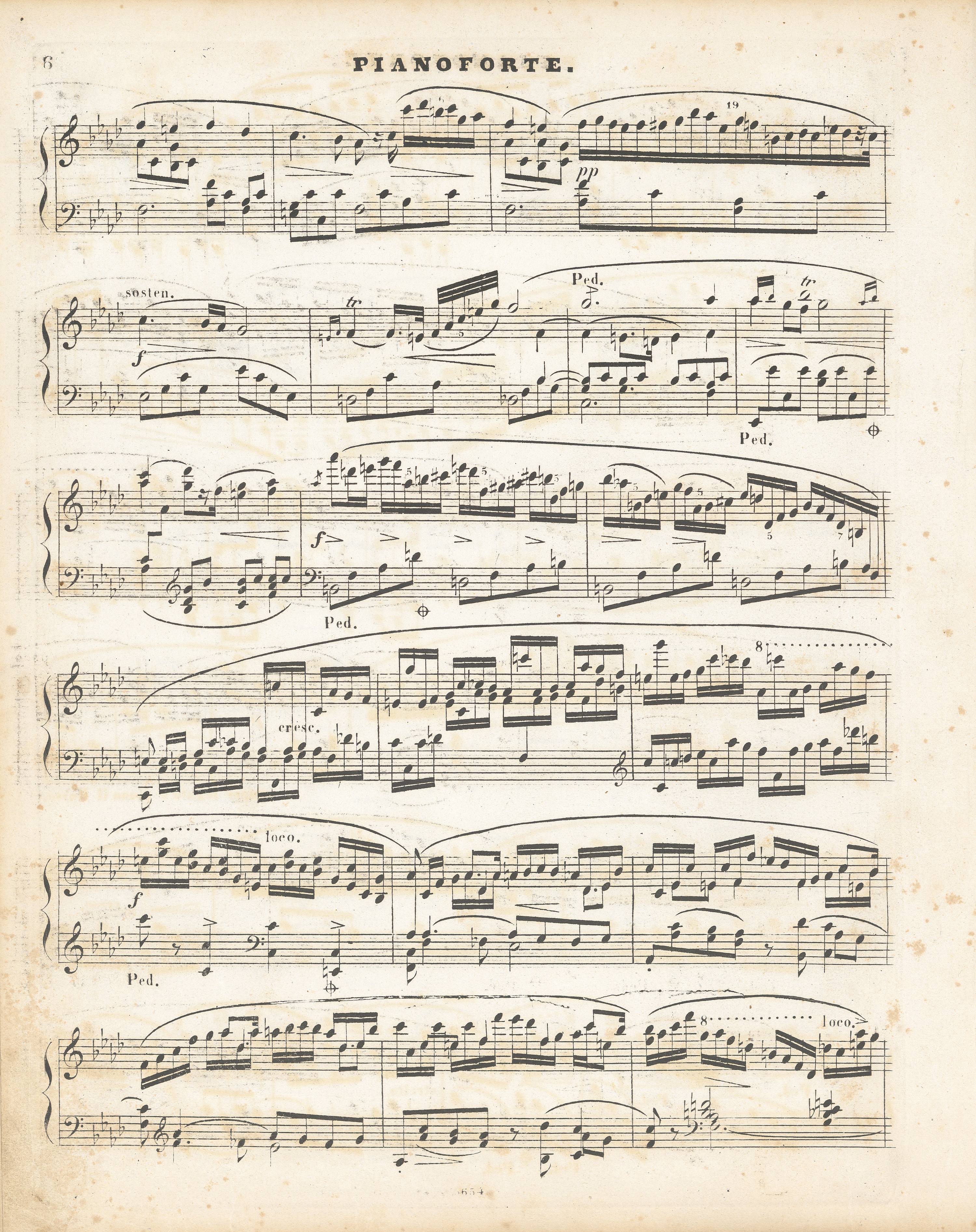



The change of the rhythmic value of d 3 from a crotchet to a quaver could be considered an inaccuracy of GE (→FE→EE), if it was not for the fact that it harmonises with the change of phrasing, which is proved by corrections of slurs in A. Therefore, Chopin probably changed the slurs in A and left the crotchet by inadvertence (perhaps he planned to maintain the two-voice notation, but he forgot to add a quaver flag). The fact that the rest concerns not only the bottom voice in A but the entire rhythmic sequence was confirmed by the sign written in FED, separating g2-d
3 from a crotchet to a quaver could be considered an inaccuracy of GE (→FE→EE), if it was not for the fact that it harmonises with the change of phrasing, which is proved by corrections of slurs in A. Therefore, Chopin probably changed the slurs in A and left the crotchet by inadvertence (perhaps he planned to maintain the two-voice notation, but he forgot to add a quaver flag). The fact that the rest concerns not only the bottom voice in A but the entire rhythmic sequence was confirmed by the sign written in FED, separating g2-d 3 from the f2 semiquaver. In this situation, the purposeful character of the change of the rhythmic notation in GE seems to be very likely and this is the version we adopt in the main text.
3 from the f2 semiquaver. In this situation, the purposeful character of the change of the rhythmic notation in GE seems to be very likely and this is the version we adopt in the main text.
In FED, except for the aforementioned separating sign, there is another one, over the discussed g2-d 3 fifth, most probably designating staccato. Whether it is a wedge or a carelessly written dot, it is hard to say. In the main text we include this teaching instruction in the form of a dot in brackets.
3 fifth, most probably designating staccato. Whether it is a wedge or a carelessly written dot, it is hard to say. In the main text we include this teaching instruction in the form of a dot in brackets.
Compare the passage in the sources »
category imprint: Differences between sources
issues: Authentic corrections of GE
notation: Rhythm





